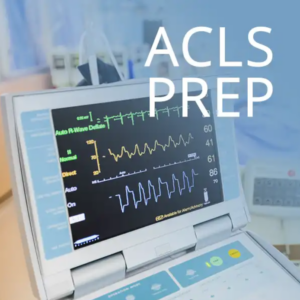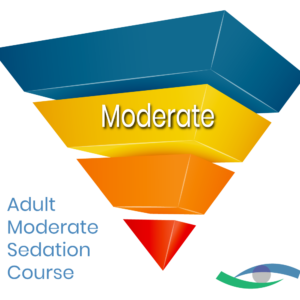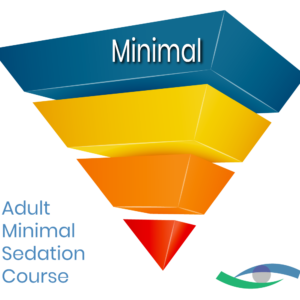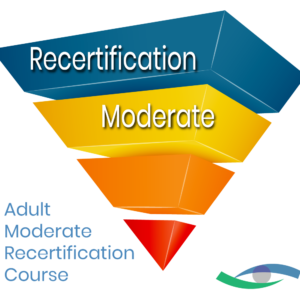Demystifying ASA Physical Status Classification
For decades, the ASA Physical Status Classification system has shaped how healthcare professionals evaluate patients for procedures that require sedation. Originally developed to categorize surgical patients, it is now routinely applied in outpatient and office-based procedural settings where minimal or moderate sedation is common.
Understanding this framework is crucial for providers outside the anesthesia specialty to conduct proper risk assessments and ensure patient safety. Here’s everything you need to know about ASA I through VI, along with how each category informs sedation choices, how to avoid common misclassifications, and the tools that support accurate patient assessment.
What Is the ASA Physical Status Classification?
This classification system was developed by the American Society of Anesthesiologists in 1941. The system was designed to give clinicians a simple way to record a patient’s overall health and make it easier to collect and compare clinical data across hospitals. Instead of predicting exact outcomes, it provides a shared language to communicate pre-procedural medical risk.
The classification ranges from ASA I (a completely healthy patient) to ASA VI (a patient declared brain-dead, whose organs are being donated). An “E” suffix is added for emergency procedures. Over the decades, ASA sedation guidelines have proven flexible enough to support risk assessment across a wide range of procedural settings.
ASA Classes I to VI Explained
The system groups patients into six categories based on health status and comorbidities:
- ASA I describes a normal, healthy patient. These patients are non-smokers, use alcohol minimally, and maintain a normal body weight.
- ASA II describes a patient with mild systemic disease without functional limitation. These patients may be pregnant, have obesity with a body mass index (BMI) between 30 and 40, live with well-controlled hypertension or diabetes, or drink alcohol socially.
- ASA III describes a patient with severe systemic disease that limits daily activity. These patients may have poorly controlled hypertension or diabetes, a chronic respiratory condition, alcohol use disorder, morbid obesity with a BMI over 40, an implanted pacemaker, or renal disease requiring dialysis.
- ASA IV describes a patient with severe systemic disease that is a constant threat to life. These patients may have experienced a recent myocardial infarction or stroke, suffer from severe valve dysfunction, or present with sepsis, acute respiratory distress syndrome (ARDS), or end-stage renal disease without regular dialysis.
- ASA V describes a failing patient who is not expected to survive without the procedure. These patients may have a ruptured abdominal aneurysm, massive trauma, ischemic bowel with severe cardiac disease, or an intracranial bleed.
- ASA VI describes a brain-dead patient whose organs are being removed for donation. These patients are maintained on life support until organ retrieval is complete.
Why ASA Classification Matters in Sedation
For non-anesthesia providers, moderate sedation risk assessment is central to running a safe practice. The ASA classification helps determine whether:
- A patient can safely undergo sedation in an outpatient setting.
- Consultation or referral is necessary due to a higher risk.
- Additional monitoring or staff training is required.
The system provides nurses and physicians with a standardized, evidence-based method for evaluating patients before a procedure. It also emphasizes a critical safety point for non-anesthesia providers: even when the goal is minimal or moderate sedation, patients can unexpectedly slip into a deeper state, and providers must be ready to manage that change.
Common Misinterpretations and Clarifications
While useful, the ASA system is often misunderstood. Here’s what to keep in mind:
- The ASA system alone does not predict procedural risk: The patient’s classification should always be considered in conjunction with other factors.
- The word “systemic” causes confusion: Some conditions, such as myocardial infarction or cirrhosis, are not technically systemic but still affect peri-procedural risk. For this reason, clinicians often classify them inconsistently.
- Surgical complexity is not part of the system: A healthy patient undergoing a simple skin biopsy and the same patient scheduled for a more invasive procedure could both be ASA I. The risk comes from the procedure, not the ASA score.
- Assignments are subjective: Studies have shown considerable variation between providers when classifying the same patient scenario. This subjectivity illustrates the importance of institutional consistency and ongoing training.
Examples of ASA Classification in Practice
- A 30-year-old non-smoker presenting for a mole removal under local infiltration with an optional oral sedative would be classified as ASA I.
- A 60-year-old with well-controlled hypertension scheduled for a colonoscopy under moderate sedation would be classified as ASA II.
- A 40-year-old with a BMI of 42 and poorly controlled diabetes requiring procedural sedation for a burn debridement would be classified as ASA III.
- A 70-year-old with a recent myocardial infarction undergoing urgent stent revision would be classified as ASA IV.
Tools and Resources for ASA Assessment
Several resources make it easier to apply the ASA Physical Status Classification in everyday practice:
- Official examples from the ASA: The ASA publishes example conditions for classes I through VI to help providers assign the right category.
- Facility-specific guidelines: Many hospitals and clinics create their own examples based on the types of procedures they do most often.
- Education and training: Sedation courses often include ASA classification as part of risk assessment training to help providers apply the system consistently.
- Airway skills practice: Because patients can drift into deeper sedation than planned, providers need ongoing training to recognize risks and protect the airway.
For anyone pursuing sedation certification for nurses and physicians, a combination of ASA classification training and hands-on practice ensures safe delivery of minimal to moderate sedation.
Take the Next Step with Sedation Training
The National Sedation Center helps healthcare providers translate the ASA Physical Status Classification into real-world decision-making. Our courses go beyond theory to include instructor-led skill verification, live airway practice, and certification that meets national standards. We are the only sedation education company with a North American instructor network for in-person training and verification. Once certified, participants are added to our National Registry and receive a verification card to confirm their competency.
Whether you’re seeking training in non-anesthesia provider sedation, looking to improve your airway skills, or pursuing continuing education credits, our programs raise the bar for patient safety. Contact us today to learn more or register online to secure your place in an upcoming session.






